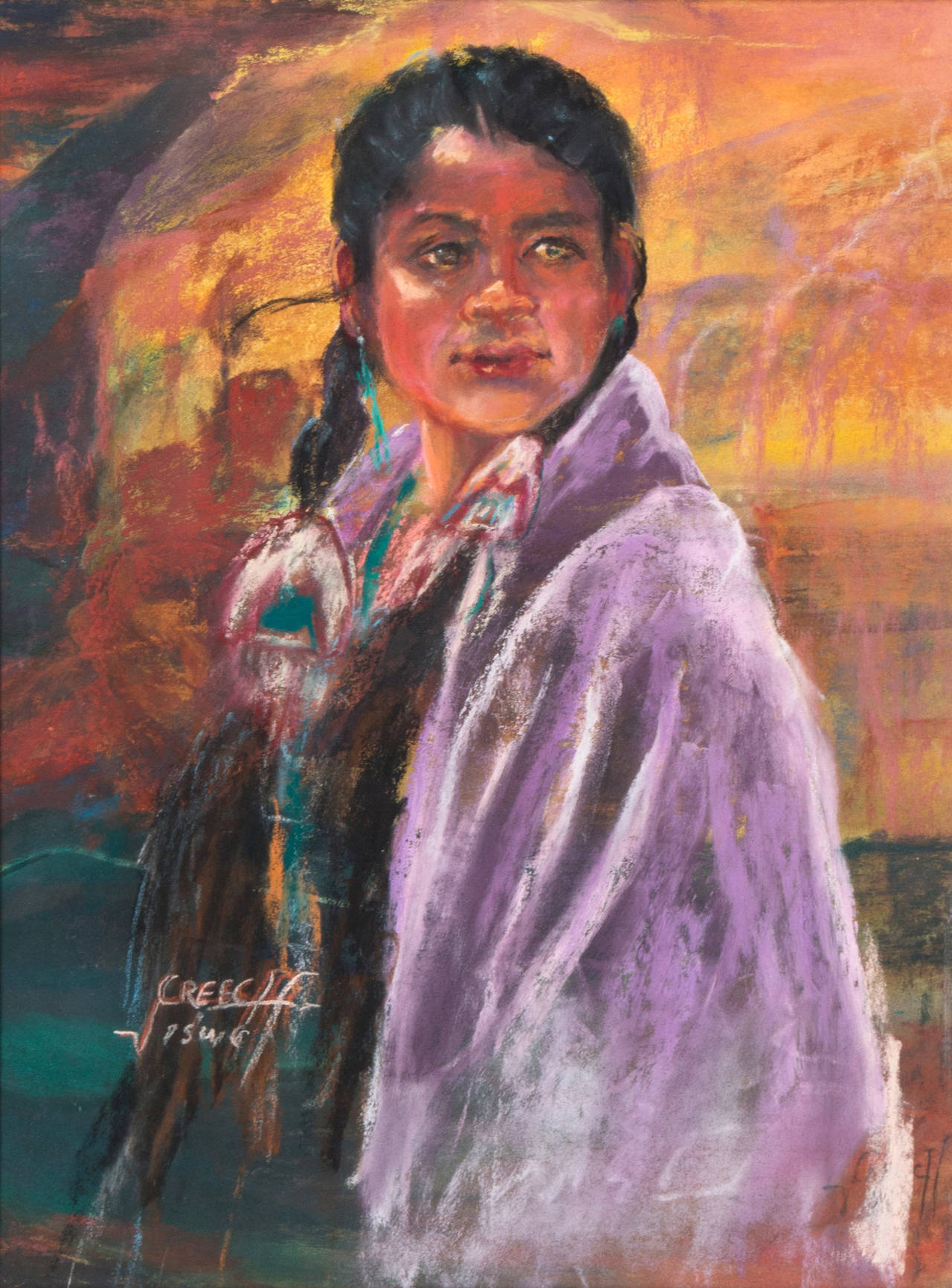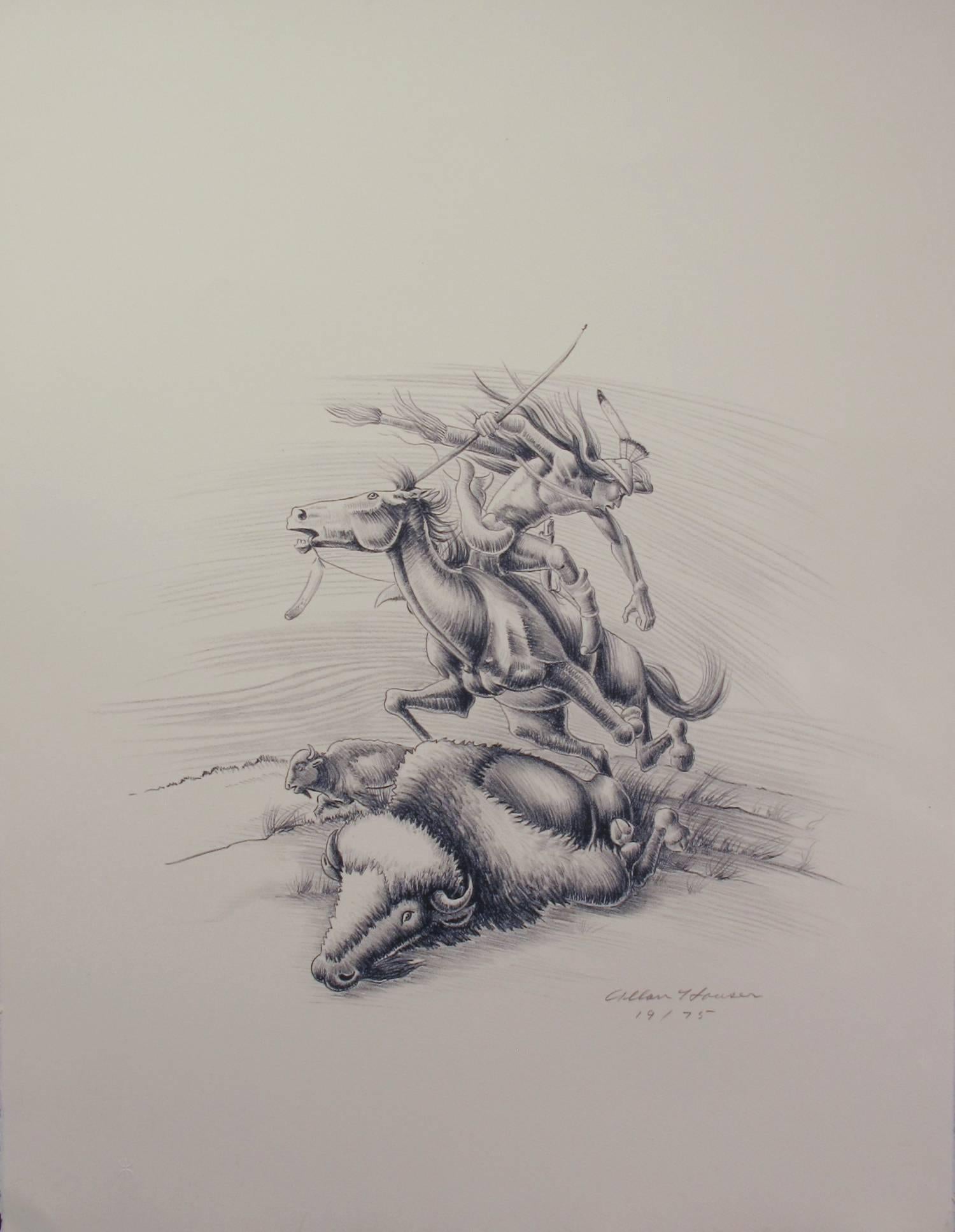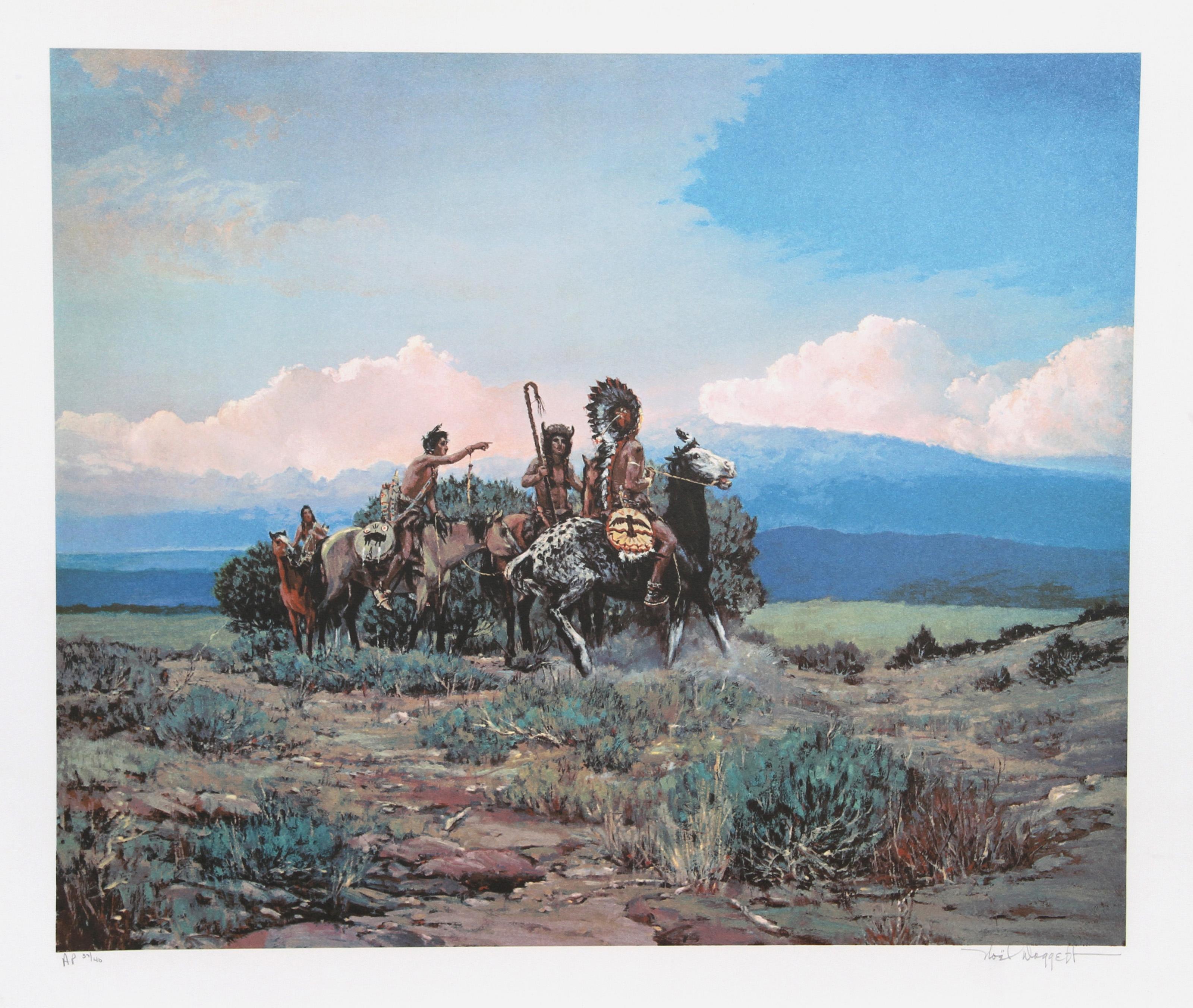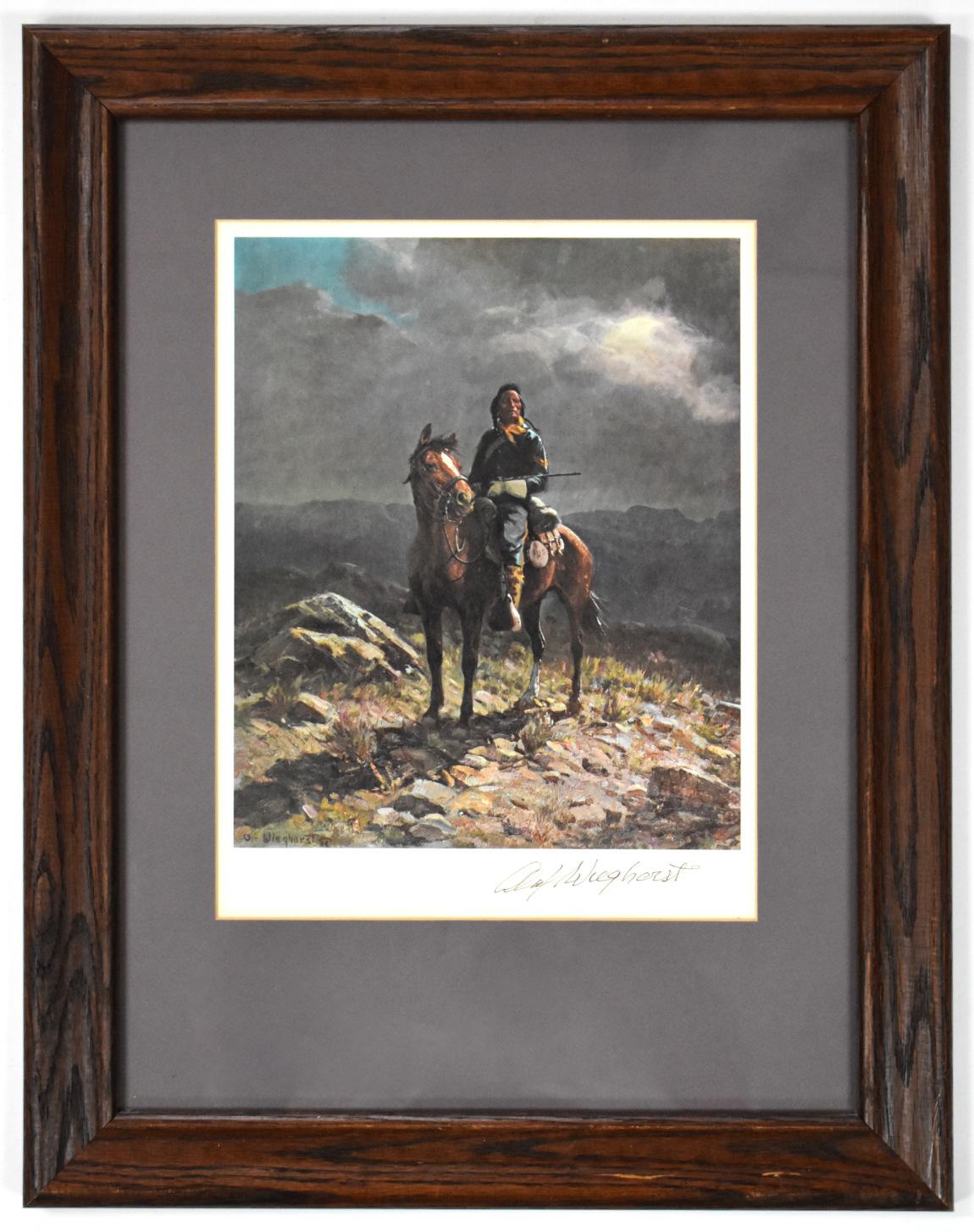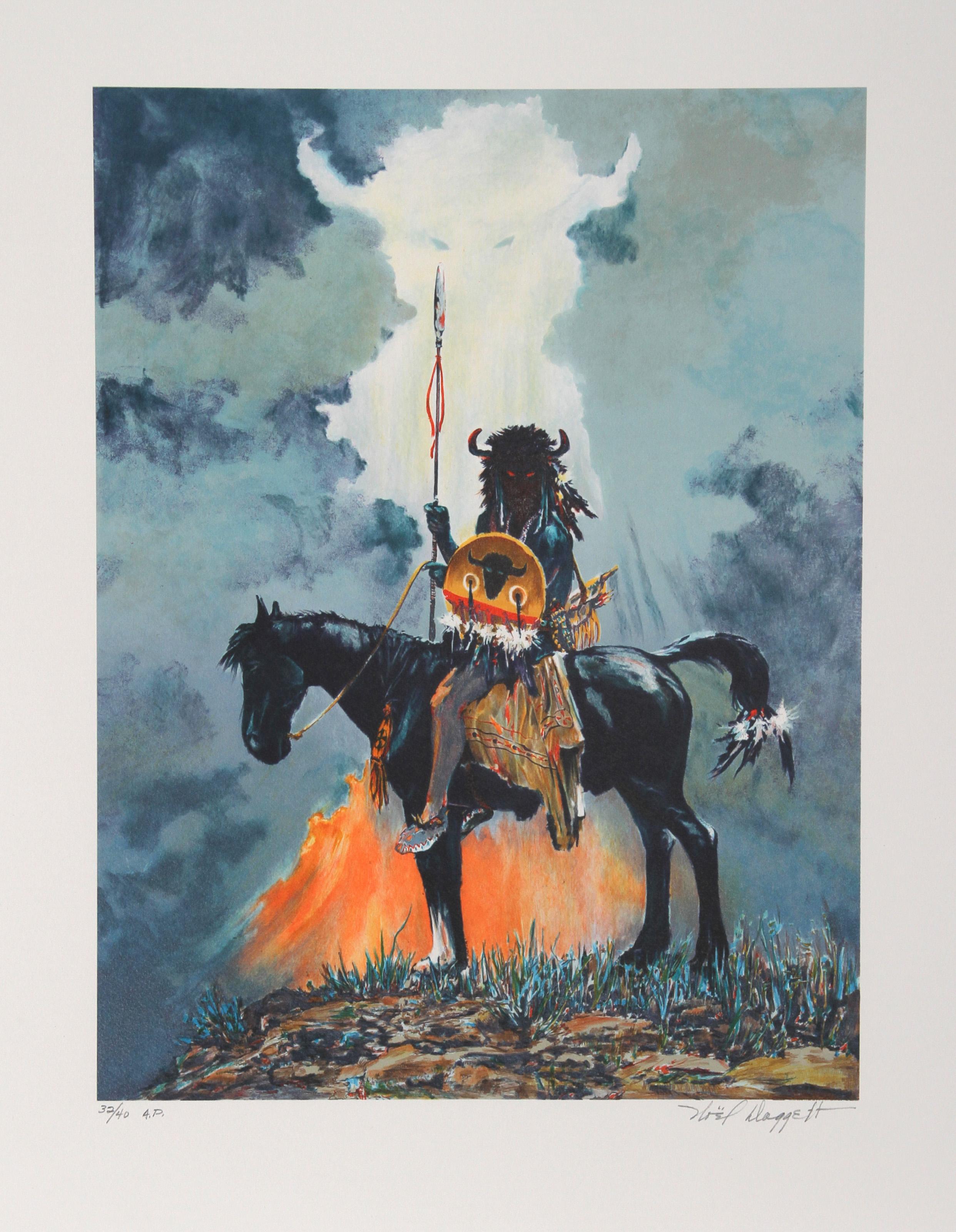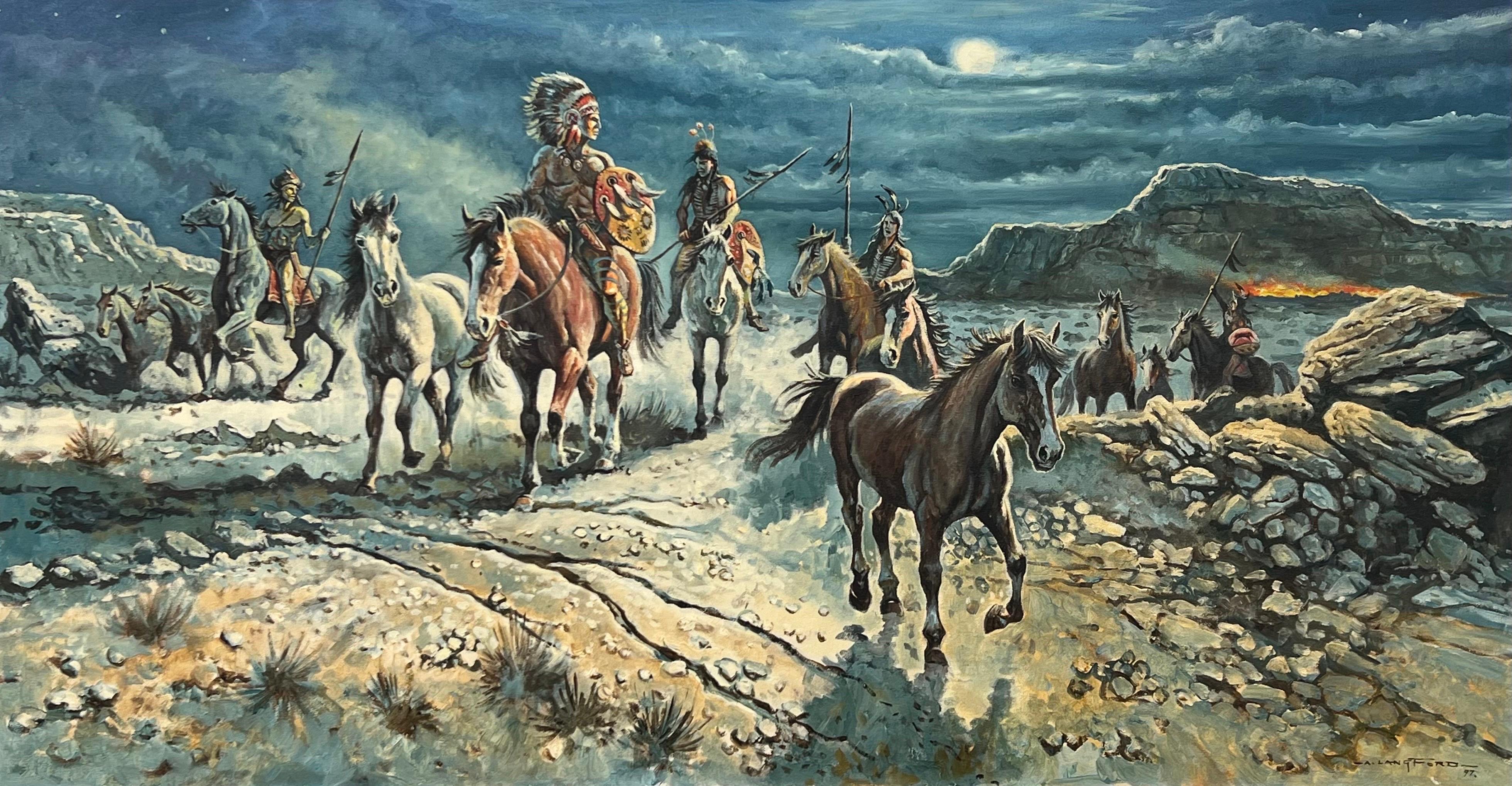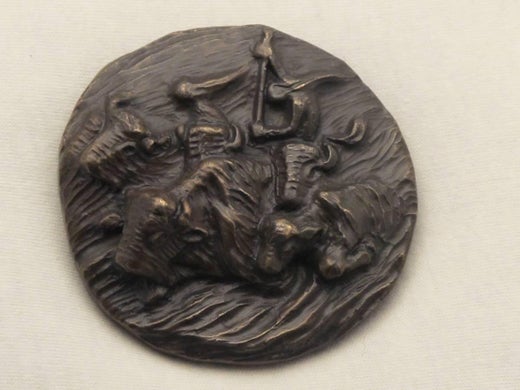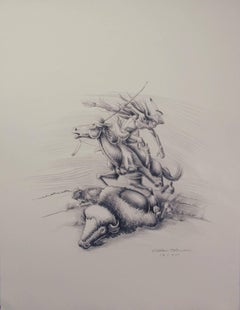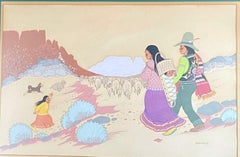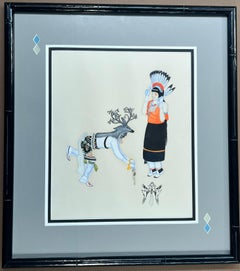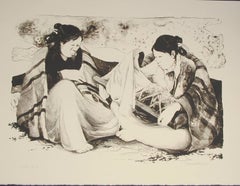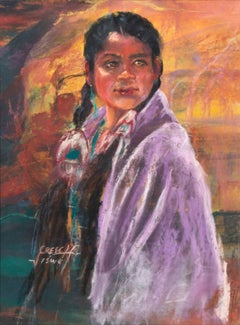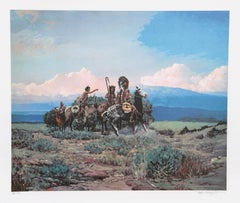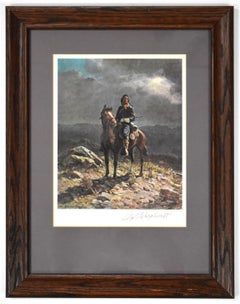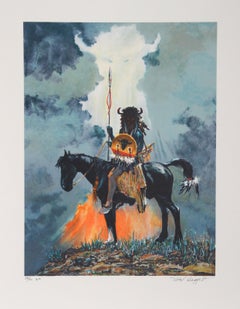Allan HouserApache Woman on Horseback, by Allan Houser, Haozous, painting, paper, horse1946
1946
About the Item
- Creator:Allan Houser (1914 - 1994, Native American, Apache)
- Creation Year:1946
- Dimensions:Height: 26 in (66.04 cm)Width: 26 in (66.04 cm)
- Medium:
- Movement & Style:
- Period:
- Condition:
- Gallery Location:Santa Fe, NM
- Reference Number:1stDibs: LU191212319682
Allan Houser
Allan Houser was represented by Glenn Green Galleries (formerly known as The Gallery Wall, Inc.) from 1973 until his death in 1994.
Sandy Green first saw this master sculptor’s work at the Heard Museum in Phoenix and immediately brought her husband Glenn to see the exhibit. The Greens responded enthusiastically to the abstraction and creativity in Houser’s work. They were impressed, not only with his versatility and talent, but with the number of mediums he employed. His subject matter was portrayed in styles ranging from realism, stylized form to abstraction. Throughout their association they noted this artist’s drive and strong commitment to his art.
With encouragement from the Greens, Houser retired from his post as the head of the sculpture department at the Institute of American Indian Arts in Santa Fe, New Mexico, in 1975 to begin working full-time creating his art. The next 20-year period was an exciting time for Allan, the gallery and for the Green family. He created a large body of sculpture in stone, wood and bronze. For many years Glenn Green Galleries co-sponsored many editions of his bronzes and acted as quality control according to Houser’s wishes. As both agents and gallery representatives, the Greens promoted and sold his art in their galleries in Phoenix and Scottsdale, Arizona and in Santa Fe, New Mexico. They had bi-annual exhibits in their galleries to feature Houser’s newest work and sponsored and arranged international museum shows in America, Europe and Asia. They travelled together for these events and went to Carrara, Italy to the famed quarries of Michelangelo and together purchased 20 tons of marble.
Glenn Green Galleries published the definitive book Allan Houser (Haozous) by Barbara H. Perlman. The author interviewed Allan Houser and his family extensively and it includes images of his family and artwork. The second printing is available in the gallery. A long-term project of the gallery for Allan Houser culminated in his receiving the National Medal of Arts in 1992 from President George H. W. Bush, America’s highest arts award.
Find authentic Allan Houser sculptures, prints and other art on 1stDibs.
(Biography provided by Glenn Green Galleries)
- ShippingRetrieving quote...Shipping from: Santa Fe, NM
- Return Policy
More From This Seller
View All1970s Contemporary Figurative Prints
Lithograph
1940s Contemporary Landscape Paintings
Watercolor
1940s Tribal Figurative Drawings and Watercolors
Paint, Paper
1970s Contemporary Figurative Prints
Lithograph
2010s Contemporary Animal Paintings
Acrylic, Wood Panel, Monoprint, Screen
2010s Contemporary Abstract Paintings
Acrylic, Archival Paper
You May Also Like
1970s Figurative Drawings and Watercolors
Pastel, Archival Paper
1970s American Realist Figurative Prints
Lithograph
20th Century Realist Figurative Prints
Archival Pigment
1970s American Realist Figurative Prints
Lithograph
1990s Tribal Animal Paintings
Canvas, Cotton Canvas, Oil
2010s Contemporary Figurative Paintings
Paper, Mixed Media, Oil Pastel
